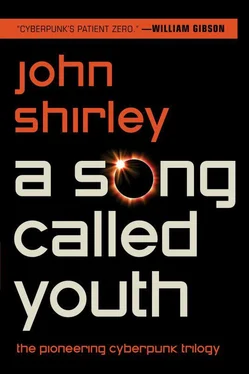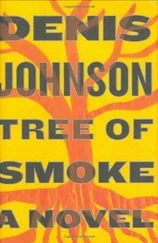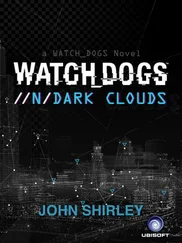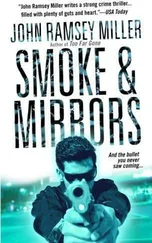The internal tumult brought on by a war going badly drove the New-Soviet hard-liners into hiding. Under a new Party leadership, the New-Soviet Republic retreated—and surrendered. But not unconditionally. Their vast nuclear arsenal precluded any unconditional surrender. They still remained in control of the NSR and some of the Warsaw Pact countries—though they had lost Poland, Czechoslovakia, Bulgaria and Yugoslavia. They agreed to pay reparations and to open their borders. Their society slid into a ferment of upheaval as reformists with a strong base of military support jockeyed for power.
Nuclear war had been sidestepped. But the conventional war had been devastating enough. And the crypto-Fascists, in the guise of an international police force in place “to keep order” in the chaos behind the lines, had seized the moment. Had put their puppets in place, contrived the illusion of a nationalist movement in a squirming handful of European states; had taken control of France, Spain, Italy, Belgium, Austria, Greece; were seizing the reins in Britain and Germany. “A wave of nationalism sweeping Europe, strangely similar, from nation to nation, in its ideological foundation,” one American observer had said. Observers were few in media-darkened Europe, and those few were not permitted to see the pogroms, the European apartheid, the rounding up of Jews and Asians and the dark races; of anyone vocally outraged by the new ghettoism, the new “processing centers.”
The Second Alliance’s power had foundered in the United States, for the most part, thanks to Jack Brendan Smoke, and other NR activists. But it had consolidated in Europe; was consolidating further, now, through the wonders of technology… and psychology. And it was for psychological reasons that the new French Fascists had given priority to reconstructing the Arc.
The Arc de Triomphe was a monument to the ego of Napoleon Bonaparte. It was the embodiment of his power; of the strength of his armies. A concretization of megalomania. On pretext, it was built to honor the French army; in reality, it stood for the ambitions of the man who’d directed that army to conquer Europe. Who had sent hundreds of thousands to their deaths as a sacrifice to his vanity. The Arc was begun in 1806; not completed until 1836. A hundred and sixty-four feet high, a hundred and forty-eight broad, more massive than any other European monument of the time; both florid and martial in its design, like a pompous architectural Goliath wearing both his armor and an effete, intricately embroidered cloak.
It was the symbol of French military might and that made it the symbolic backbone of nationalism; it was irrefutably masculine, structured as solidly as an empire.
There was an irony. It had been, for a while, also the symbol of the New Resistance; an outline of the Arc sewn on the NR flag. But that flag had been rarely seen, and the Fascists had again taken the initiative, retaken the symbol, like land retaken in a battle, co-opted it and, in a way, inverted it for their own use.
The New Resistance would find another symbol. It was about to raise a new banner, a banner neither red nor black, and certainly not the white of surrender. The flag was simply blue. The blue of an open sky.
Paris, France. June. Deep into the twenty-first century.
Dan Torrence knew the look; knew how to wear it. A walk that conserved energy; a hunching over, just a little, with hunger. Not stumbling or belly-gripping but sheltering the hollowness in your stomach, and the weak fire that still burned there, as if you were trying to protect it from going out in the thin rain of this lusterless spring day. It was the camouflage he adopted as he moved slowly but stolidly around the edges of the crowd filling the Place de l’Hôtel de Ville.
He’d seen the look often enough in the last few months; could now simulate it effortlessly. Here it was repeated in the crowd like an expressionist’s motif: the distorted posture, the gaunt faces, the pasty skin, the expressions of deep waiting on pallid faces.
He glanced with studied disinterest at the high, ochre insta-mold and raw-wood stage newly set up on the other side of the square, festooned with banners in the colors of the French flag; colors gone dull under the lifeless, aluminum-gray sky. The clouds shrugged out a little rain, and a fitful wind made Torrence hunch deeper into his green plastic slicker. Suddenly, the Marseillaise blared and echoed around the square, pumped from stage speakers as, behind the podium, French soldiers, every one of them Caucasian, in full dress replete with berets, tugged white ropes, to ceremoniously raise an enormous French flag as backdrop for the stage. The flag drooped like a man with a bent back until, pulled taut, it snapped into display as if the man straightened to bare his chest. The crowd reacted with a smattering of applause and a shudder of skeptical muttering. Everyone quietly aware of the forty Second Alliance bulls, the men in soft armor and mirrored helmets, carrying rifles and Recoil Reversal sticks, standing at parade rest, in formation, to either side of the stage… They were part of the array, as well as protection for the new president of France…
The flag blocked out a large section of the Hôtel de Ville—the City Hall of Paris, in its latest incarnation. Built first in the sixteenth and early seventeenth centuries; burned by the Commune in outrage against the excesses of Napoleon III in the nineteenth century, rebuilt in a foggy imitation of Boccador’s somewhat extravagant wedding-cake conception, looking now Victorian and called by the French an example of Belle Époque. The Second Alliance had chosen it for this event, Torrence supposed, because it was one of the few intact government buildings left in Paris.
The square had been the Place de Grève until 1830; a place of celebrations and official functions, which sometimes combined when there was an execution. In this square, so Levassier said, Ravaillac, the man who’d assassinated Henry IV, had his dagger hand burned off; his torso torn open with sharp tongs, and the wounds filled with boiling oil. Then, while he still lived, his body was pulled asunder by horses… And in this Place, other criminals, and supposed criminals, had been “broken on the wheel,” their bones crushed by an executioner wielding a heavy bar; others were simply hung or axed or guillotined, events reliably attended by great crowds of the rich and the poor, enjoying the spectacle.
The spectacle had arisen again, like a ghost who returns on lunar cycles. But today there would be no executions. Except perhaps one execution, Torrence thought: Truth, Smoke would probably say, will be guillotined here today.
They raised the instrument of that particular execution: a television monitor big as a movie screen, humming upright on the back of the sound truck parked to the left on the stage. On it, almost immediately, was an image of the Arc de Triomphe, unfurling in pixels like an electronic flag.
Daniel Torrence, whose nom de guerre had been Hard-Eyes, looked at the scene through the shutters of apparently hunger-blurred eyes, seeming to see only the podium, the flag, the image of the erstwhile Arc: the symbols. Some other observer behind the shutters of his eyes saw the blank boxes set up to one side of the stage: holographic-shading projectors camouflaged as sound equipment.
And, without looking directly at them, he saw that Danco and Lina Pasolini and Charles Cordenne, looking as drab and inconspicuous as Torrence, were in position in the crowd. They stood at points diametrical to him, facing the stage.
The guards slid the paper-thin antiprojectile styrene into place in front of the stage now; stuff so thin and transparent and glare-resistant you couldn’t see it from most angles. It would stop bullets; it wouldn’t stop the interference projector hidden under Torrence’s rain slicker.
Читать дальше












